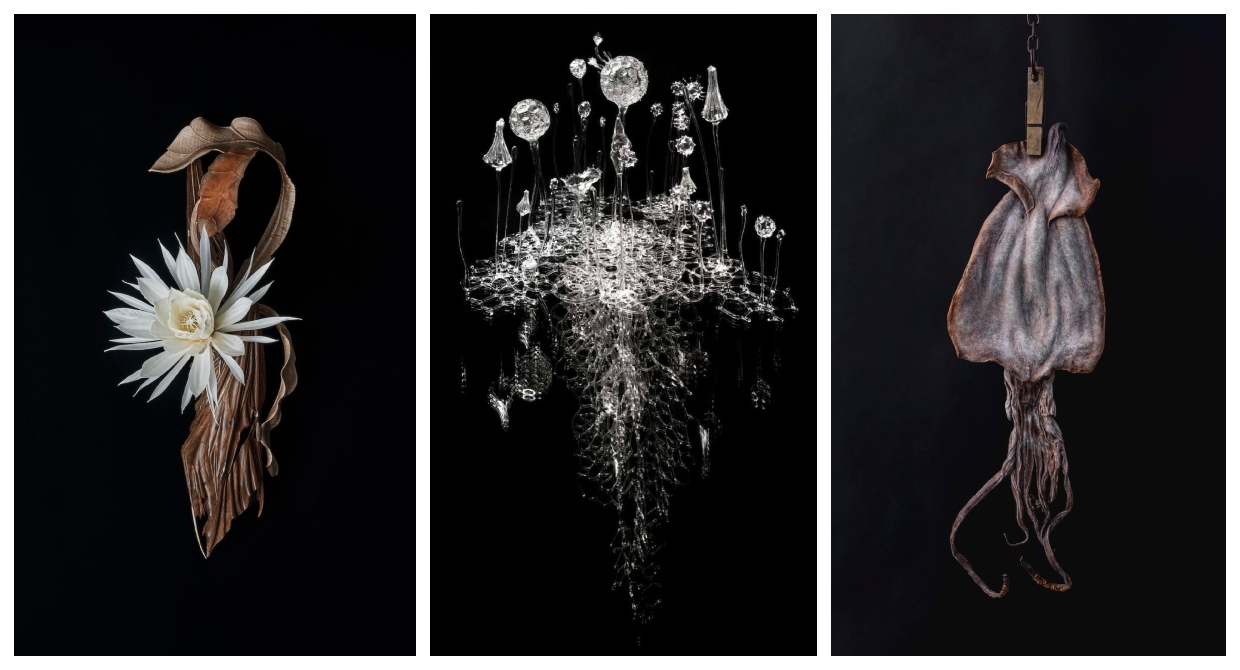
It’s hard to overstate the cataclysmic impact that the Meiji Restoration had on Japan. The Meiji period, defined as the period between 1868 and 1912, followed what was nearly 300 years of almost complete isolation from the globe. Craftsmen and artists who had previously served just one master—their feudal lord, or daimyo—were suddenly faced with an international audience. And so they had to adapt to a totally new clientele and demand, which consequently resulted in a flourishing of new styles and production techniques.
From kibori wood sculpting to kirie paper cutting, a new exhibition opening in Tokyo highlights today’s contemporary artisans working across multiple mediums who continue to hone their craft to a level that has elevated craft to works of marvelous art.
advertisement
Ryoho Otake (wood)
Wood sculptor Ryoho Otake takes inspiration from the delicate world of nature and creates wooden replicas that mimic not only the minute details of plants but the their life cycles as well. Didn’t think that was possible? In the sculpture below titled “Moonlight” (2020), deer antlers are used to carve 47 white petals and when water is poured into the sculpture, it slowly blossoms. See video below.
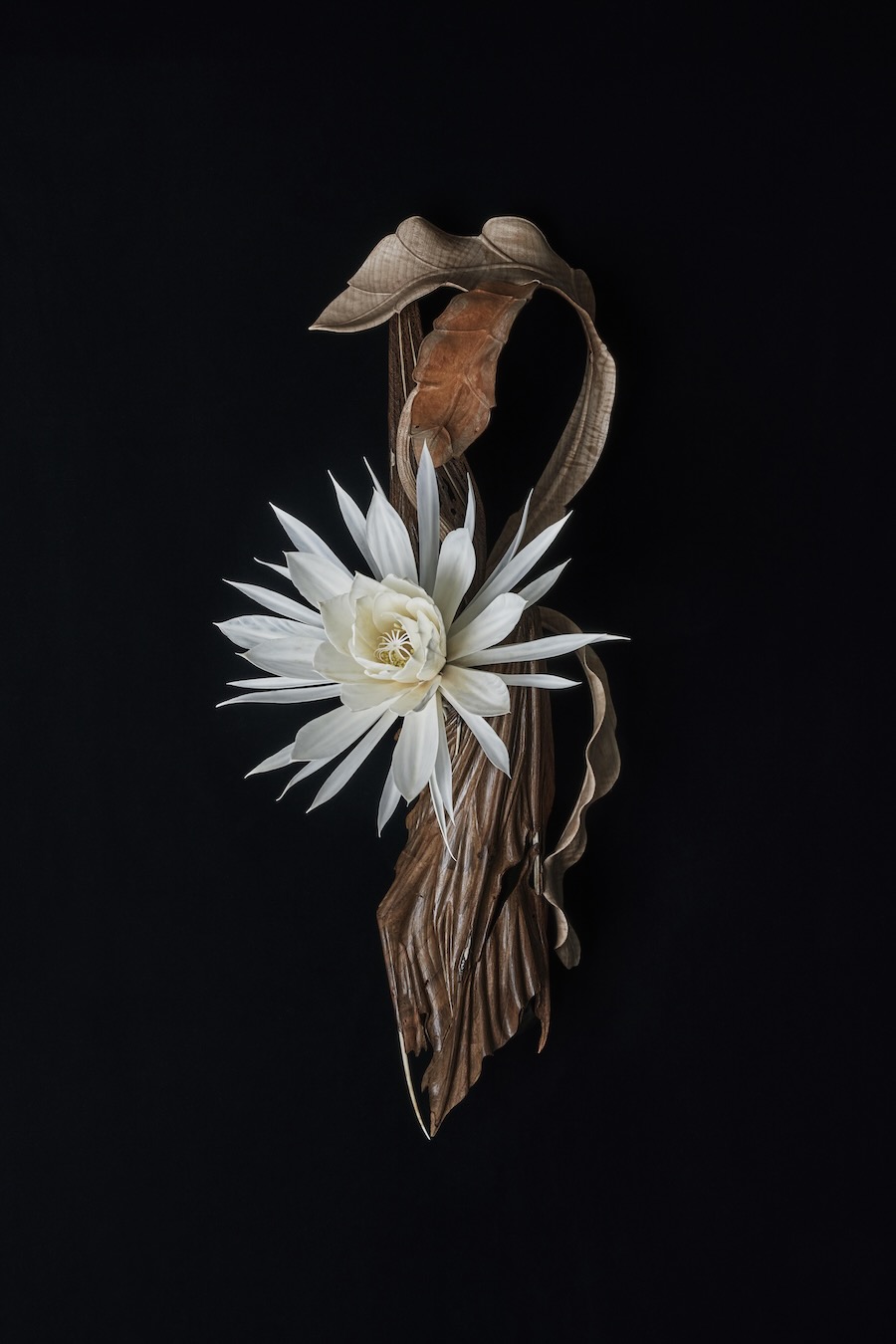
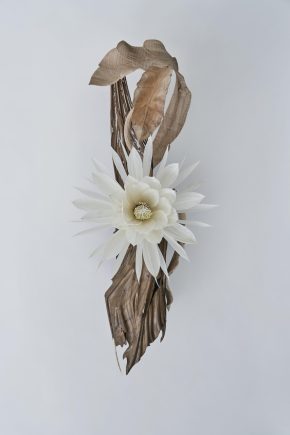
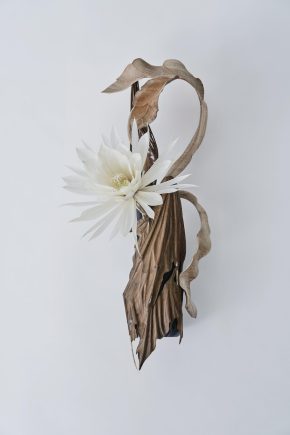
Eriko Inazaki (ceramics)
These white and intricate forms appear to be the work of mother nature, sculpted over hundreds and thousands of years. Instead, they’re the work of Japanese ceramicist Eriko Inazaki, who painstakingly shapes and assembles each prick and piece by hand. And in doing so, she’s pushed the art of ceramics beyond its traditional boundaries.
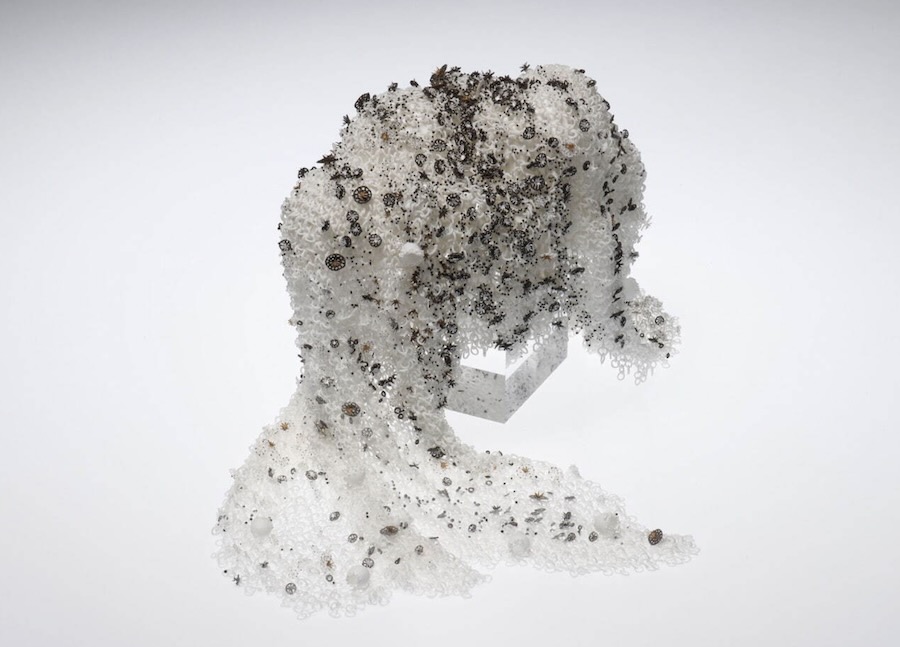
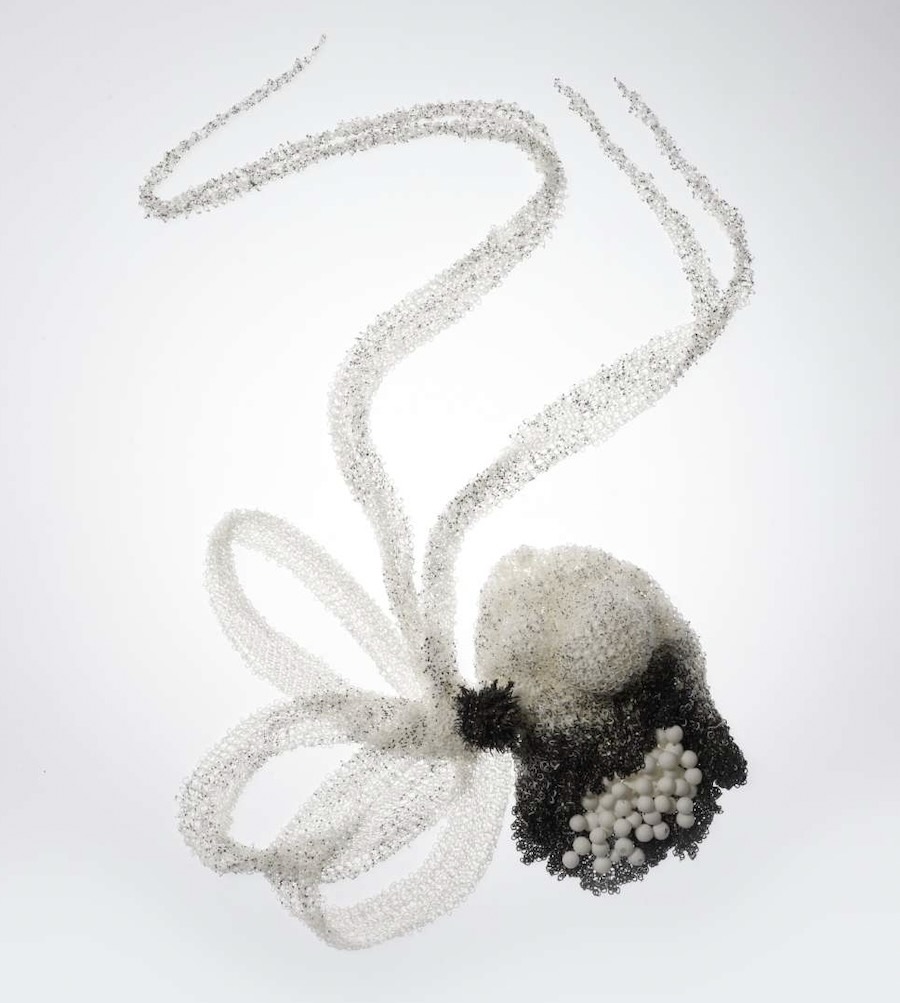
Toru Fukuda (wood)
Butterflies can sometimes be found sipping moisture from puddles or wet soil after a rain. The process, seen here in the images below, are known as “puddling.” Except this image is not a real-life butterfly, nor are the puddles made from real water. The scene has been sculpted entirely from wood by Japanese artist Toru Fukuda.
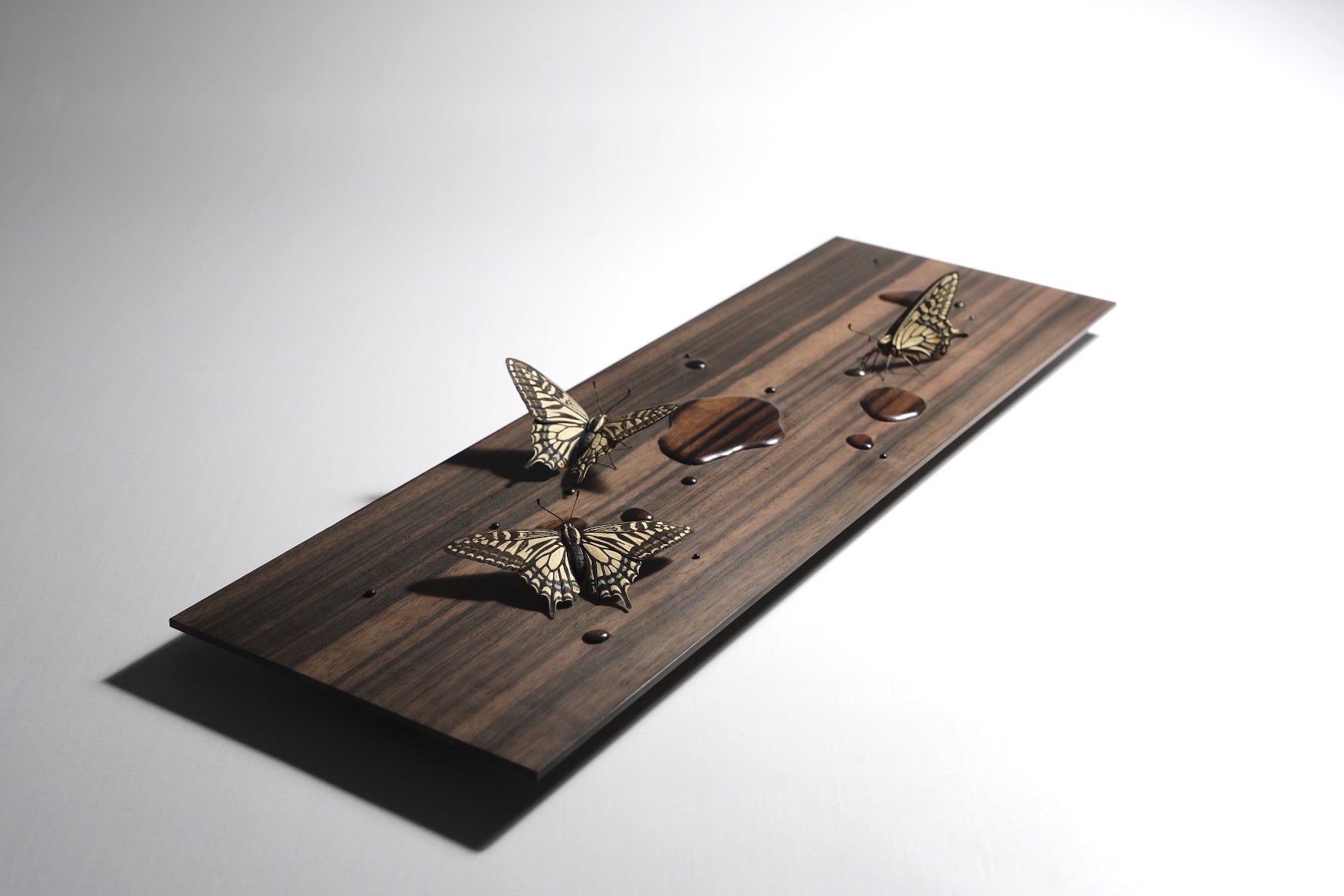
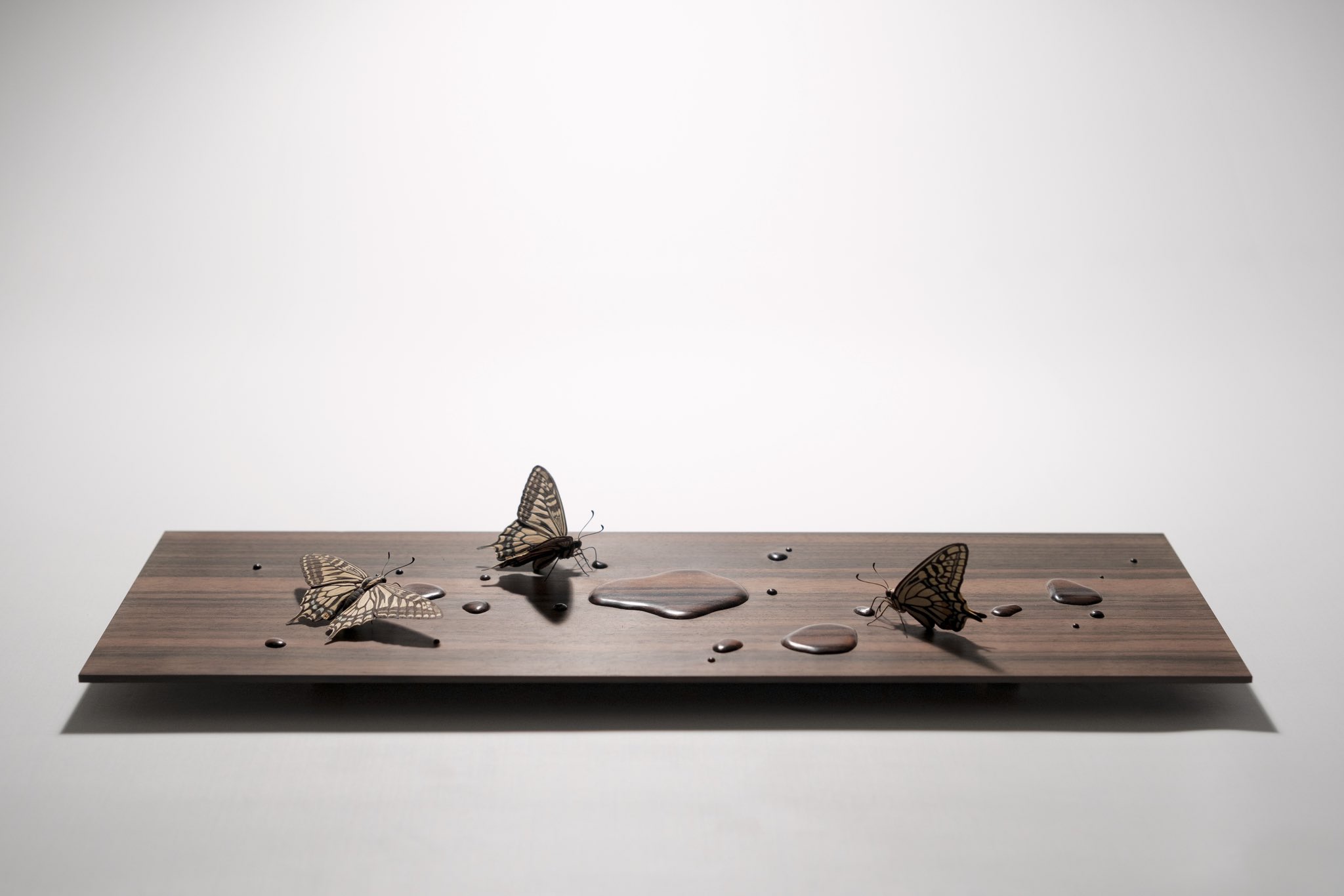
Seikichi Hasegawa (metalwork)
Hasegawa is a fourth-generation metalworker whose ancestors made sword-fittings, or tsuba, for the Owari Tokugawa family. After the Meiji Restoration, the artisans turned to making tea utensils. The current Hasegawa, while continuing to make tea ceremony accoutrements, shows his playful side with a series of utilitarian objects recreated in silver, such as bubble wrap.
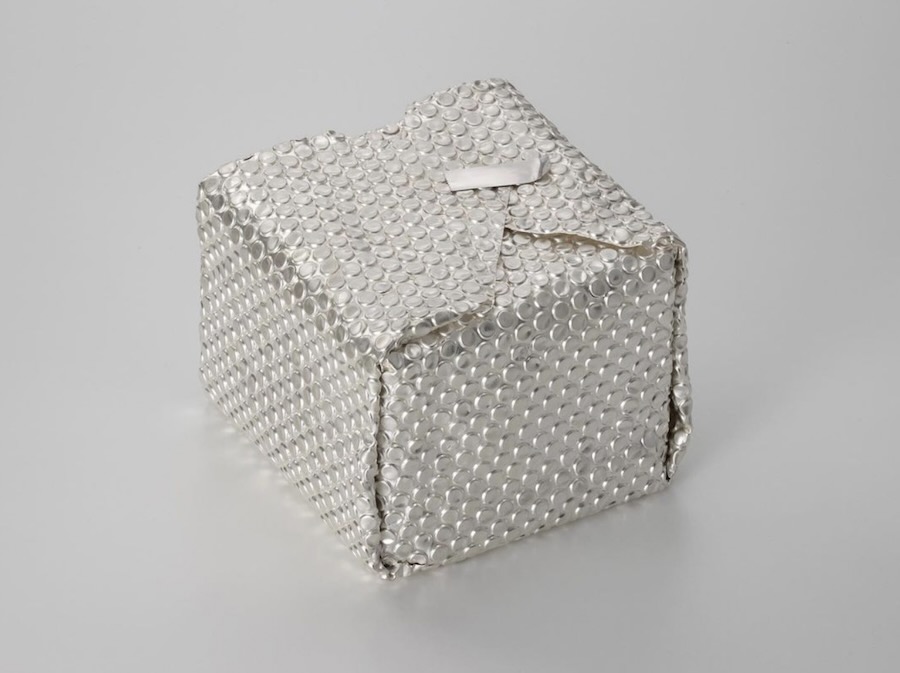
Fuyuki Maehara (wood)
Fuyuki Maehara is entirely self-taught in the art of wood sculpture. In fact, his career trajectory has been anything but typical. Originally a professional boxer, and later an office worker, Maehara didn’t decide to go to art school until age 32. But he chose oil painting as his study. He slowly transitioned to sculpture and, today, creates realistic yet unorthodox carvings made from a single block of wood. The wooden dried squid below, from tentacles to clip are all carved from the same block.
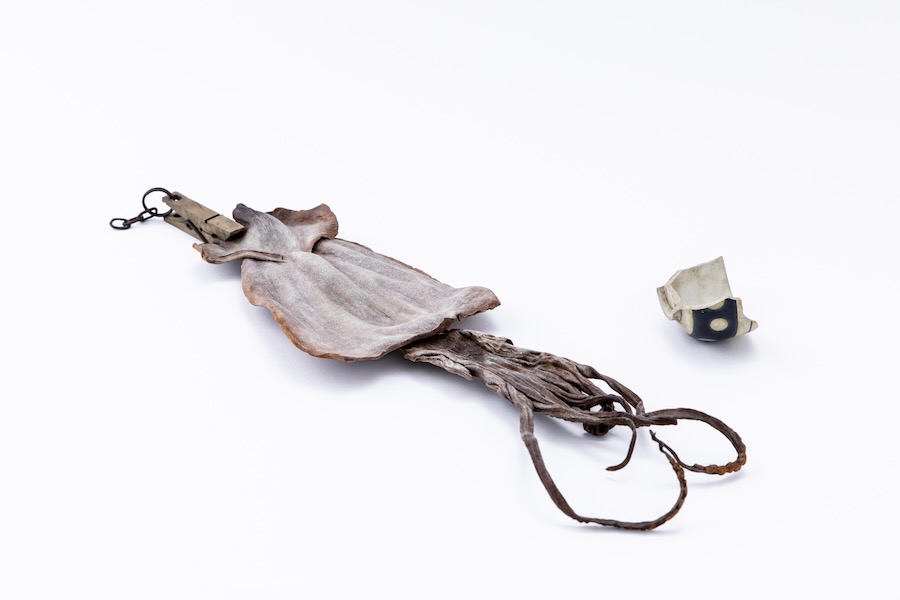
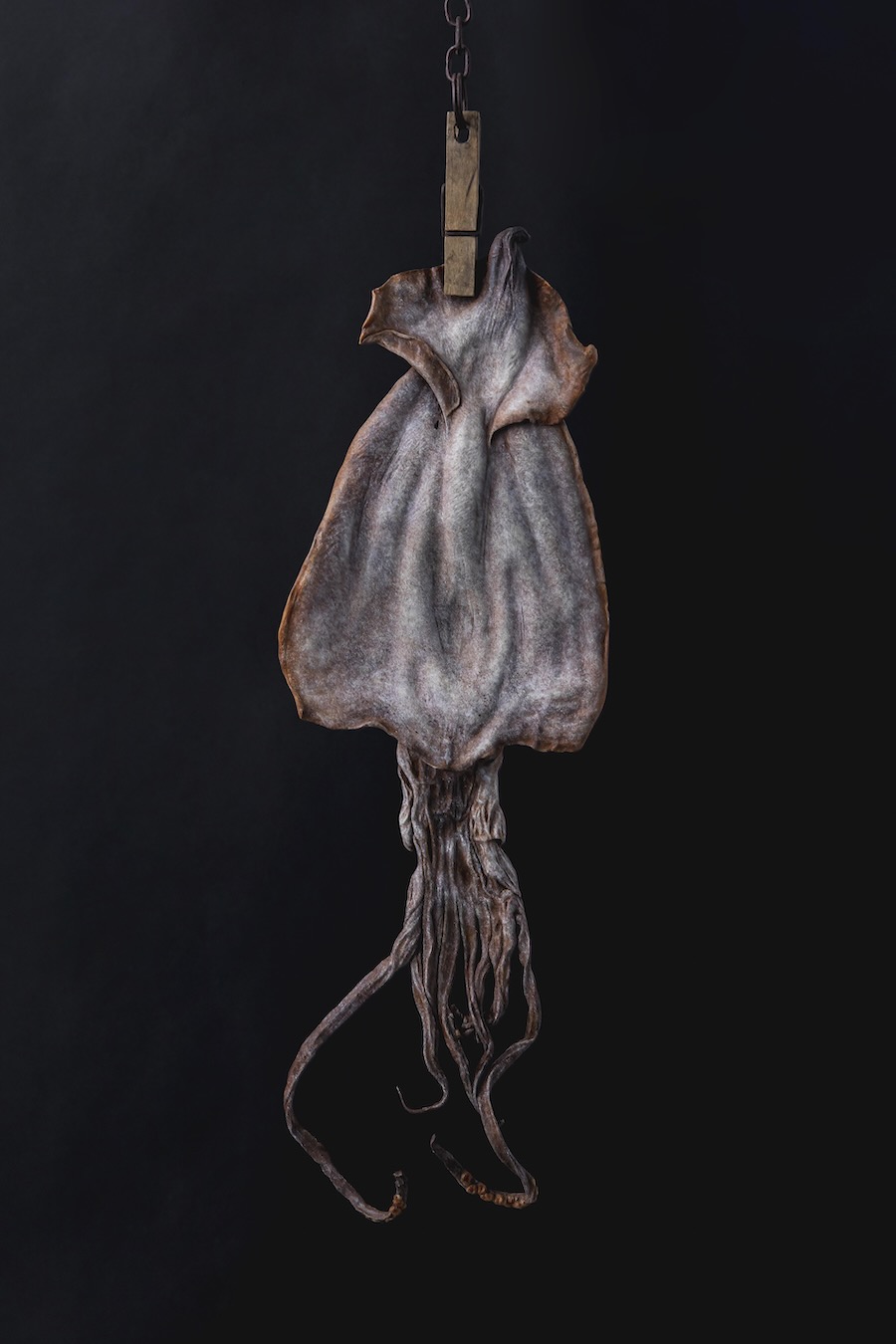
Mika Aoki (glass)
Artist Mika Aoki creates exquisite glass sculptures inspired by her fascination with the visible and invisible qualities of the medium. What at first appears to be high-speed macro photographs of water droplets, turn out to be physical stationary sculptures carefully crafted from glass. Aoki often derives her inspiration from the forms found in microscopic life such as spores, fungi or even viruses.
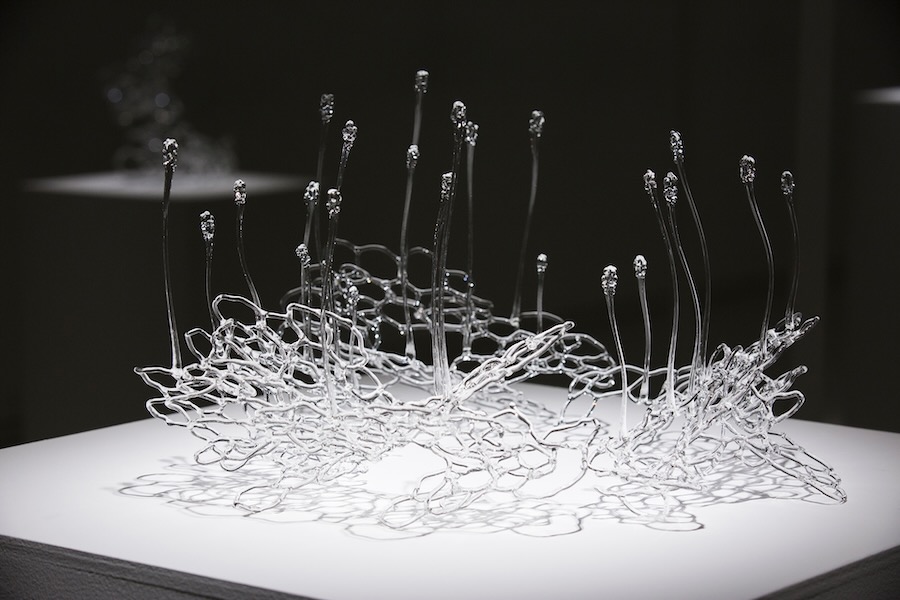
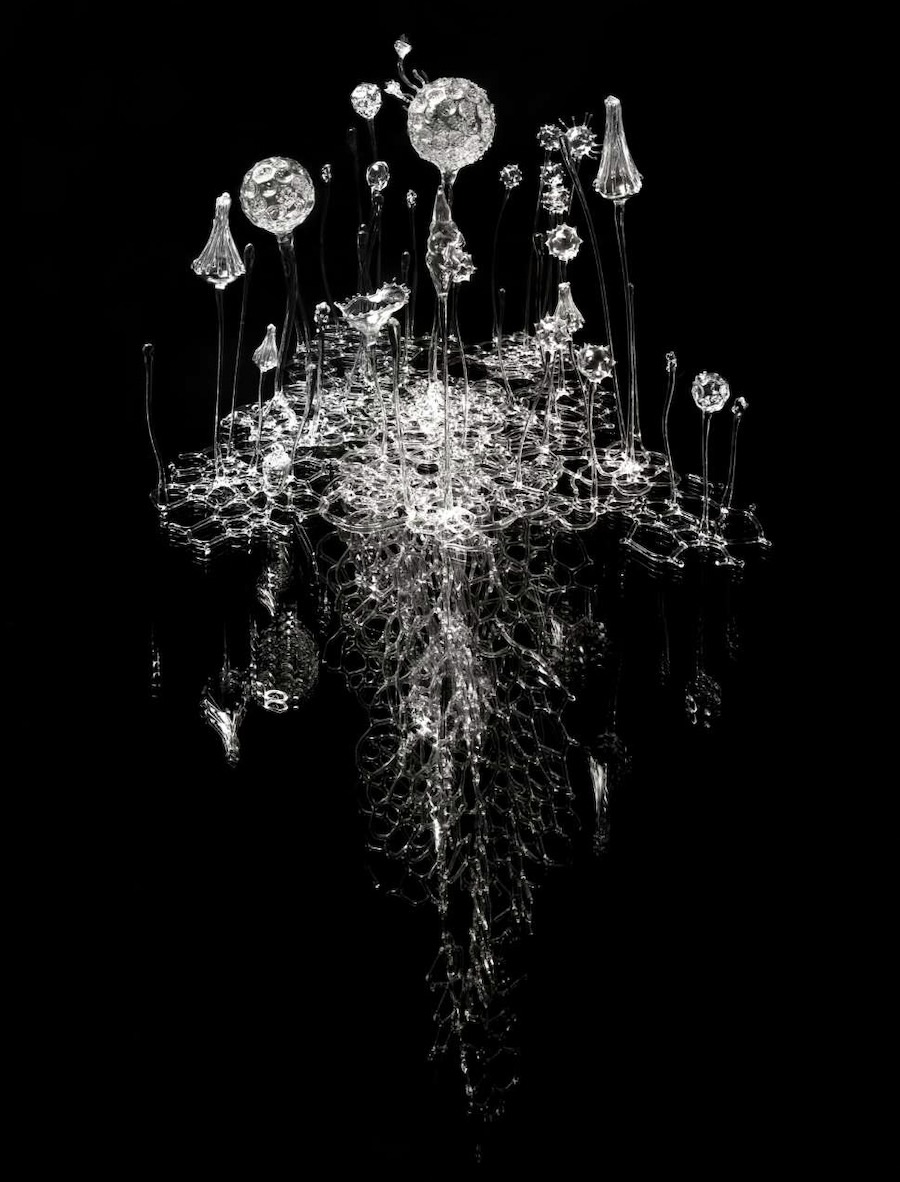
Aya Morita (kirie)
Aya Morita creates large-scale paper cutouts (kirie) that often reference historical works of art. The first image is “The Birth of Venus Ⅱ” (2022) and is an homage to Botticelli. The second image is titled “Mary Magdalene” and references Caravaggio. In both cases, the central figure is an Asian person, which questions the idealized world of masterpieces and highlights the discrepancies between masterpieces and our values.
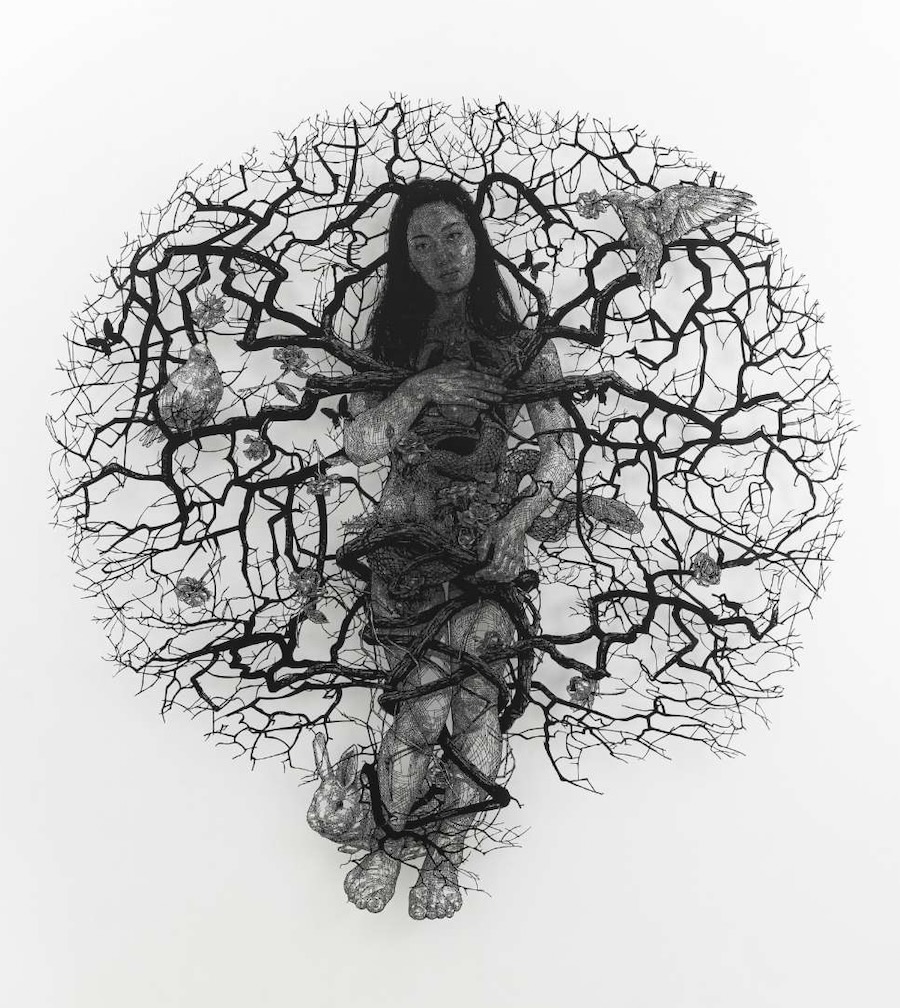
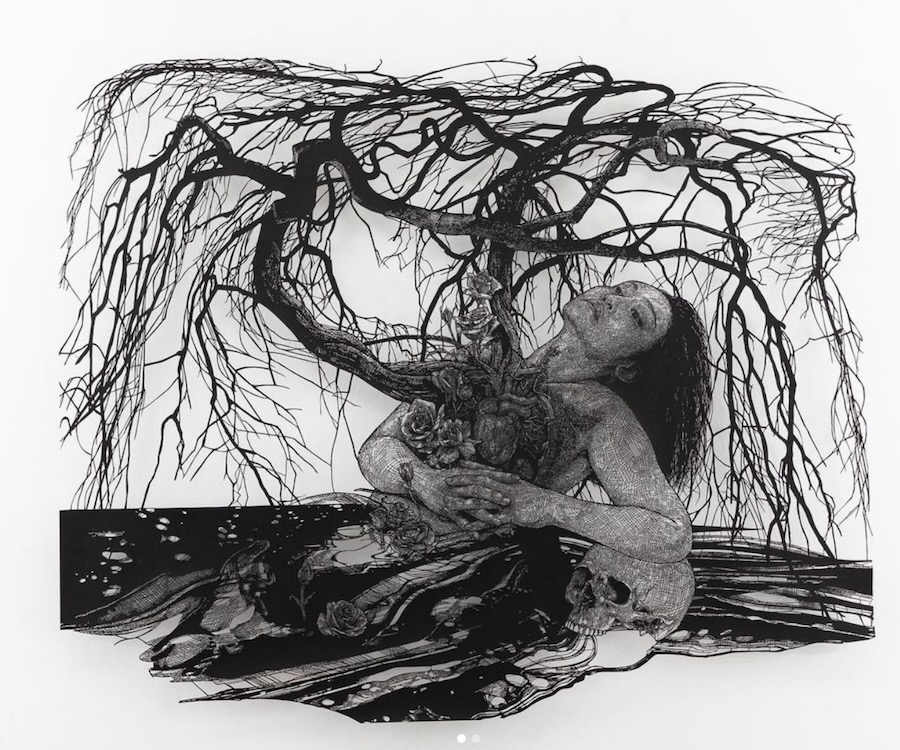
A total of 17 artisans and 64 works are on display as part of the exhibition “In the Genes, Taking Marvelous Meiji Craftsmanship into the Future,” which is on display from September 12 – November 26, 2023 at the Mitsui Memorial Museum in Tokyo.


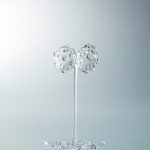
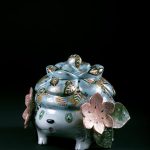



















September 19, 2023 at 10:31 pm
I wonder if there is an interest in viewing work by American female artist in Mississippi…whose work illustrates her fascination with Japan?